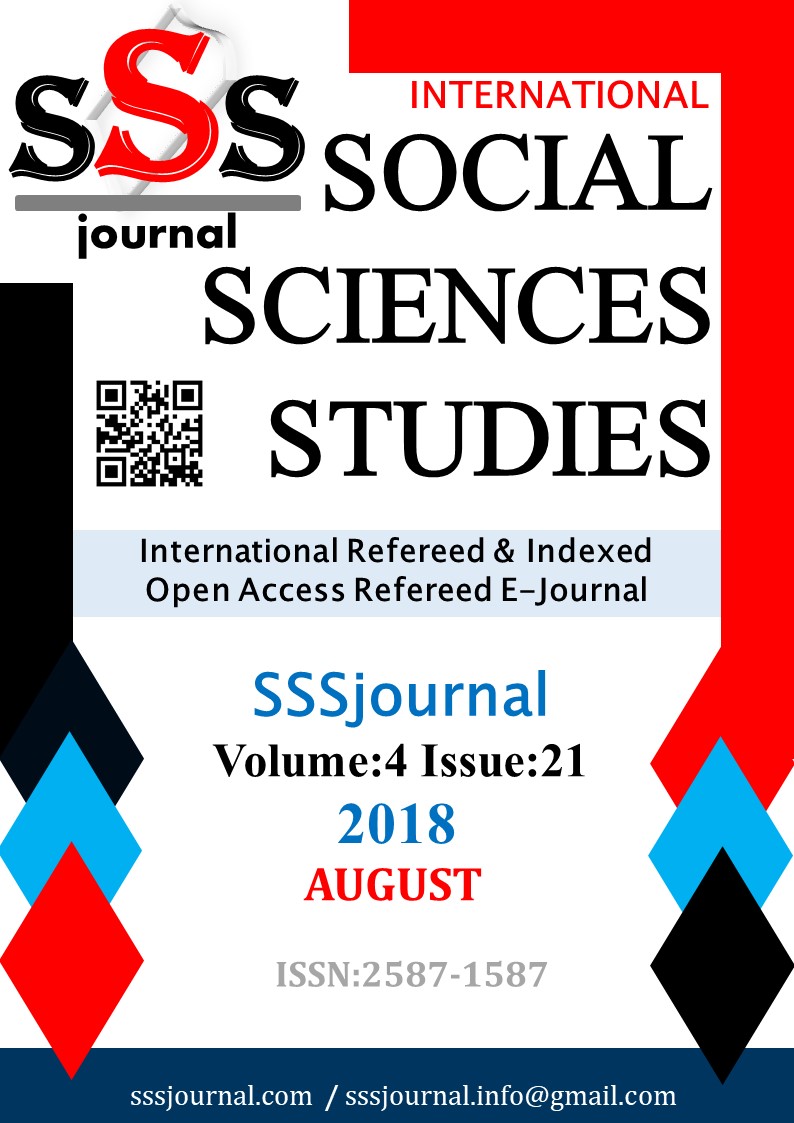Author :
Abstract
Türkiye ekonomisi açısından önemini koruyan tarım sektörü cumhuriyetin kuruluşundan itibaren tarım politikaları ve kamu müdahalesi ile desteklenmektedir. Türkiye’de ekilebilir tarım arazileri son yıllarda azalma eğiliminde olup; ekilebilir araziler içinde en yüksek paya sahip olan buğday, pamuk ve şeker pancarında da ekim alanları gittikçe azalmaktadır. Bu çalışmada tarım sektöründe önemli bir paya sahip olan bu üç ürüne yönelik 2002-2017 yılları arasında yapılan destekleme ödemeleri ile ürün ekiliş alanları arasındaki etkileşimin ortaya konulması amaçlanmıştır. Çalışmada, buğday ve pamuk üretiminde alan bazlı destekler ve fark ödeme desteklerinin yapıldığı, desteklemelerin bu ürünlerin ekim alanlarını genel olarak etkilemediği belirlenirken; şeker pancarı üretiminde alan bazlı destek ödemesinin yapıldığı ve üretimin desteklemeden etkilenmediği saptanmıştır. Çünkü alan bazlı destek ödemeleri (özellikle mazot desteği), üreticinin girdi maliyetinin küçük bir bölümünü karşılamakta ve girdi fiyatlarında meydana gelen artış, ürün fiyatlarında meydana gelen artıştan daha yüksek gerçekleşmektedir. Üreticiye verilen girdi desteği, üreticinin maliyeti, girdi fiyatları ve ürün fiyatı dikkate alınarak belirlenmelidir.
Keywords
Abstract
Since the establishment of the importance of protecting the agricultural sector of the Republic of Turkey in terms of economic and agricultural policies are supported by public intervention. Turkey is in arable farmland decreasing tendency in recent years, which has the highest share of arable land for wheat, cotton and sugar beet acreage is declining steadily. In this study, it was aimed to reveal the interaction between the support payments made between the years 2002-2017 on the three products which have a significant share in the agriculture sector and the product cultivation areas. In the study, it was determined that area-based supports and difference payment support were made in wheat and cotton production, support was not generally affecting the cultivation areas of these products, it was determined that area based support payment in sugar beet production was made and the production was not affected without support. Because area-based support payments (especially diesel support) meet a small portion of the input cost of the manufacturer and the increase in input prices is higher than the increase in product prices. Input support given to the manufacturer should be determined by considering the cost of the manufacturer, input prices and product prices.
Keywords
- Aktaş, E. (2006). ÇUKUROVA BÖLGESİ'NDE PAMUK ARZ DUYARLILIĞININ TAHMİNİ ÜZERİNE
- Aktaş, E. (2006). ÇUKUROVA BÖLGESİ'NDE PAMUK ARZ DUYARLILIĞININ TAHMİNİ ÜZERİNE BİR ÇALIŞMA. Tarım Ekonomisi Dergisi, 12(1), 3-8.
- Breustedt, G., & Habermann, H. (2009). Determinants of Agricultural Cash Rents in Germany: A SpatialEconometric Analysis for Farm-Level Data. International Association of Agricultural Economists Conference (s. 1-23). Beijing: International Association of Agricultural Economists Conference.
- Brzozowska, A., Bubel, D., Kalinichenko, A., (2015). Tendencies in Financing The Agricultural and FoodSector under The Common Agricultural Policy, Socio-Economic Problems and the State, Vol. 13, No. 2, p.29-36, ISSN 2223-3822.
- Dellal, İ., Özat, H. E., & Özüdoğru, T. (2007). Tarımda Mazot Kullanımı ve Mazot Destekleri. Ankara: Tepge.
- Fan, S., Gulati, A., & Thorat, S. (2007). Investment, Subsidies, and Pro-Poor Growth in Rural India. IFPRI Discussion Paper, 1-24.
- GTHB, 2016. Ortak Tarım Politikası (OTP), Avrupa Birliği ve Dış İlişkiler Genel Müdürlüğü, file:///C:/Users/user920/Desktop/AB-TÜRKİYE/OTP%20BROŞÜR.pdf
- Kumbasaroğlu, H., & Dağdemir, V. (2010). ERZURUM İLİNDE TARIM MAKİNELERİNE SAHİP OLANVE OLMAYAN İŞLETMELERDE PATATES, ŞEKER PANCARI VE AYÇİÇEĞİ'NİN ÜRETİM MALİYETİ. ADÜ Ziraat Fakültesi Dergisi, 7(2), 15-24.
- Milojević, I. and Ćurčić, M., (2017). Role of The Budget in Financing of Agriculture, SustainableAgriculture and Rural Development in terms of the Republic of Serbia Strategic Goals Realization with theDanube Region - development and application of clean technologies in agriculture - thematic proceedings,December 2016, Belgrade, Serbia, p.360-373, ISBN 9788662690562. https://www.cabdirect.org/cabdirect/FullTextPDF/2017/20173281659.pdf
- Özçelik, A., & Özer, O. O. (2006). Çiftçilere Yapılan Kimyevi Gübre Desteği ve Tarımsal Faaliyette Kullanılan Mazot için Destekleme Ödemelerinin Değerlendirilmesi. Tarım Bilimleri Dergisi, 13(1), 1-8.
- Pankobirlik, (2017). Dünya, AB ve Türkiye Şeker İstatistikleri, Nisan, http://pankobirlik.com.tr/ISTATISTIKLER.pdf.
- Resmi Gazete, (2001). 24378 Sayılı ve 19.04.2001 Tarihli Şeker Kanunu.Resmi Gazete, (2006). 5488 Sayılı ve 18.04.2006 Tarihli Tarım Kanunu.
- Semerci, A., & Çelik, A. D. (2017). Reflections of Animal Husbandry Subsidies on Dairy Cattle Enterprises: A Case Study of Hatay Province-Turkey. Tekirdağ Ziraat FAkültesi Dergisi, 14(2), 92-100.
- Şenses, F., (2017). İktisada Farklı Bir Giriş, İletişim Yayınları 2513, Araştırma-İnceleme Dizisi 413, İstanbul, ISBN-13:978-975-05-2231-4.
- TMO, (2017). Hububat Raporu, Toprak Mahsulleri Ofisi Genel Müdürlüğü.
- UPK, (2017). Pamuk Sektör Raporu 2017, Ulusal Pamuk Konseyi, 3 Şubat http://www.upk.org.tr/User_Files/kitaplik/ulusal-pamuk-konseyi-pamuk-sektor-raporu-2017.pdf
- Üzümcü, A., (2018). Türkiye’de Tarım Sektörünün Gelişimi, Türkiye Ekonomisi Sektörel Yaklaşım, Savaş Kitabevi, Ankara, ISBN 978-605-2328-83-5.
- Yavuz, G. G., Miran, B., Gürer, B. B., Yüksel, N. Y., & Demir, A. (2016). BUĞDAY, DANE MISIR VEÇELTİK ÜRETİMİNDE FARK ÖDEMESİ DESTEKLERİNİN ETKİSİ. Ankara: TARIMSAL EKONOMİ VE POLİTİKA GELİŞTİRME ENSTİTÜSÜ.
- Weber, J. V., & Key, N. (2012). How Much Do Decoupled Payments Affect Production? An Instrumental Variable Approach with Panel Data. American Journal of Agricultural Economics, 94(1), 52-66.





